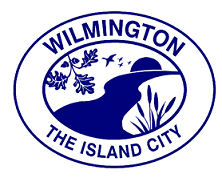
Wilmington, Illinois
Wilmington, Illinois is the residence of 5,664 people according to the 2020 U.S. Census data.(1) Wilmington is far enough from Chicago (and major connecting highways) that it is not on the commuter path, which has enlarged many a city in the last decades. This has also kept it from experiencing significant population loss, as larger towns have when businesses leave. Since the 2010 census, the official change in population was only a loss of 60 persons.(1) For its’ size, Wilmington has a wealth of history which may not be obvious.
Wilmington is nicknamed the ‘Island City’ because of the islands in Kankakee River, which runs through the town. The Kankakee River at one time had river boats which travelled in the vicinity. There were three to five smaller dams in or near Wilmington between the mid-1800’s to mid-1900’s; most were not maintained and did not survive. A remaining dam, just south of the South Island, has earned Wilmington a certain notoriety. There have been multiple deaths near the dam, partly because it doesn’t look deep or potentially dangerous. Significant signage has been put up as well as a lengthy fence, to prevent access and minimize future fatalities.
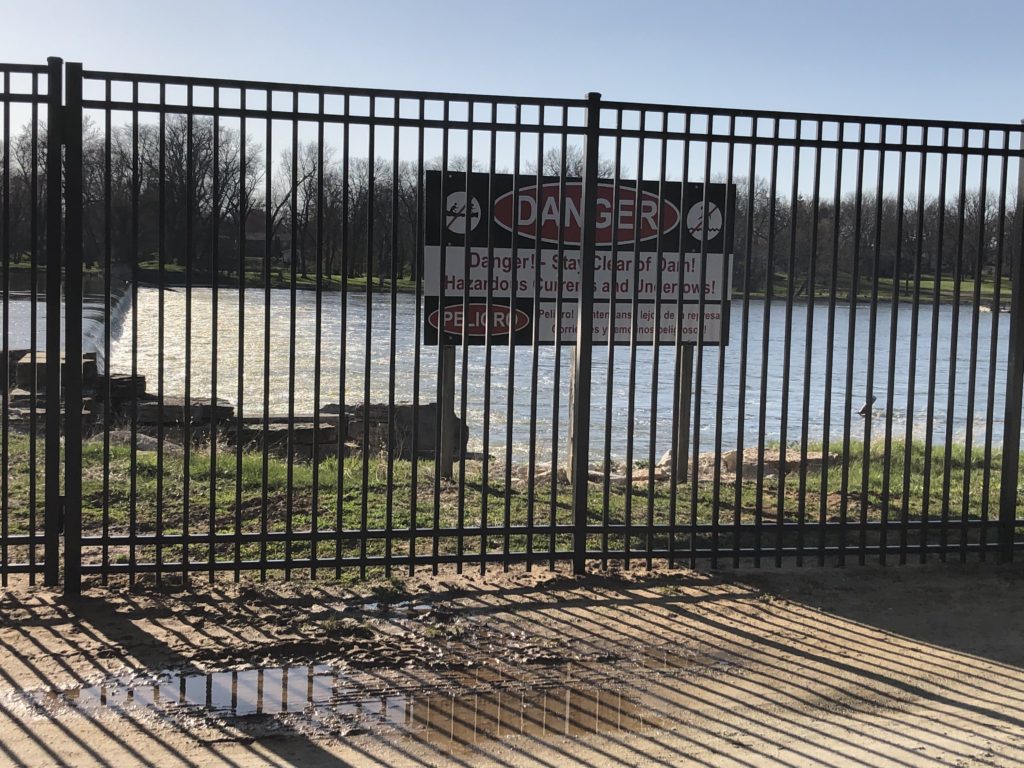
Pre-1600's
European Settlement
Thomas Cox was the first European settler, around 1834. Two years later, he purchased 400 acres of land, including the Island, which he re-sold in parcels. This village was briefly called Winchester, then renamed Wilmington in 1838, since another Winchester, Illinois already existed. Cox’s fellow settlers included Henry Althouse, Henry & Elias Brown, A.J. McIntosh, Peter Polly and Peter Stewart, later of Stewart House. Wilmington as established as a village in 1854, and incorporated as a city in 1865.
The Stewart House, the Exchange Hotel and the McIntyre mansion were used as parts of the Underground Railroad in Wilmington. Mr. Stewart, Mr. McIntyre, and Mr. McIntosh, among others, were active in the local Underground Railroad.
Timeline / Firsts
1838; first hotel – The Eagle House. This was also the first building built on the south side of Forked Creek.
1838; first school. It was a private (subscription) school, and classes were held in the Peter Stewart house until 1841, when the first public school was built.
Franklin Mitchell; in 1840 he was the first clerk of Eagle House (hotel); he later built the Exchange Hotel, reputed to be the finest for miles around.
Andrew Whitten; (1840), owned a mercantile business (first in town?).
James Young was the first blacksmith (mid-1800’s); Charlie Johnson was the last blacksmith in town in the 1930’s.
The Post Office was established March 21, 1837. Rural services were added in 1903; city delivery began in 1949.
George Bristol, first public school teacher, 1841.
Dr. Bowen moved to Wilmington from Joliet in 1849 and became its first doctor.
First National Bank, 1863, first bank in Wilmington, and oldest in Will County.
John H. Daniels, first mayor 1865.
The first water mains, to help minimize fire damage, were laid in 1867. Gas and its mains arrived in 1958.
First City Hall was built in 1879.
1868 saw the creation of a Volunteer Fire Department.
Soldiers’ Widows’ Home was built in 1895.
Charlie Ward had the first car 1903 in town. Louis Cassingham was the first to sell cars in town.
Dr. Cassingham had the first telephone in the early 1900s.
The Masonic Lodge dates back to 1855, with a charter from 1856. Eastern Star was formed in April 1981 and the Kings Daughters in 1898. American Legion, Lester Smith Post 191, 1920. Rotarians were formed in 1938. The Veterans of Foreign Wars, Malcolm J. Mayo Post 5422 , dates to 1946.The Jaycees and Lions came to Wilmington in 1951 and 1953, respectively.
Boy Scouts arrived in 1927; Girl Scouts in 1943.
Parent Teacher Association 1932.
Garden Club dates back to 1937.
Industry
The first settlers were entrepreneurs as well, coming prepared to build everything they’d need. Thomas Cox built his home and a saw mill, and later added grist mill and carding machine. Peter Polly raised grain and distributed seed that others might farm as well. Quarries were also early businesses; several buildings in town still stand which were made of the local stone. An early nut and bolt factory became a paper mill, making paper of straw. A cheese and butter factory led to the Wilmington Dairy Association being formed (1877).
Electricity came to Wilmington via the Wilmington Light & Power Co. They supplied power from 4pm to midnight; perhaps because before 4pm natural daylight would suffice, and after midnight good citizens would no doubt be asleep. Wilmington Light & Power was purchased by the Public Service Co. of Northern Illinois around 1912.
Coal was discovered in Reed Township in 1863. In 1866 Chicago & Wilmington Coal Co. was organized, leading to no small confusion as the coal was called ‘Wilmington coal’ – despite no coal being found in Wilmington. Deep shaft mines were dug and flourished between 1870 and 1900. Strip mining began around 1923 after the deep shaft mines yield began to fall. At its’ height, up to two tons of coal a day was being removed from the earth, one of the largest yields in Illinois.
Before the phone and internet, newspapers were vitally important. Wilmington has had several over the years, including the Free Press, Herald (beginning in 1854) Independent (1861), and People’s Advocate (1870). The Free Press and the Advocate merged in the late 1970’s to form the current Free Press-Advocate.
The current Chamber of Commerce notes 85 members from a wide variety of industries.
Joliet Arsenal
The Government purchased 40,000 acres in 1940 and built the Joliet Arsenal. The arsenal operated from 1940 to the late 1970s. It was originally opened to support the war effort in World War II, but was again used for both the Korean and Vietnam Wars, and briefly during the Reagan presidency. The plants were named Elwood Ordnance Plant (for Elwood, Illinois), and Kankakee Ordnance Works (for the Kankakee River. There were some growing pains as Wilmington adjusted to the thousands of people newly arrived to work at the Arsenal plant.
There was one major incident at the plant. June 5, 1942 there was an explosion which left 48 dead or missing. From a United Press newspaper article written at the time, “Explosion shattered buildings of one of the units of the $30,000,000 Elwood Ordnance plant gave up the bodies of 21 workers Friday. Army officials said 36 more were missing from the blast that could be felt for a radius of 100 miles. Another 41 were injured, five of them critically, from the explosion that leveled a building…. Not one of the 68 men inside the shipping unit when the blast occurred escaped death or injury.”
Joliet Arsenal was decommissioned. It was slowly transitioned into industrial parks, with over 20,000 acres becoming the Midewin Tallgrass Prairie, with its emphasis on restoring the prairie to a pre-colonial condition, complete with roaming American bison.
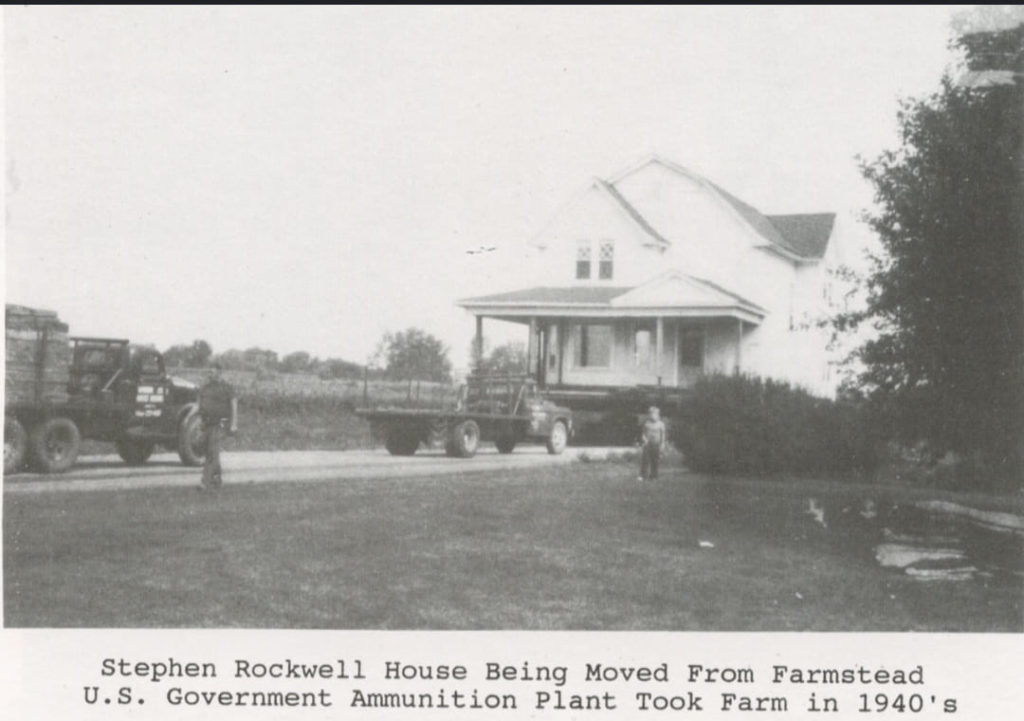
Transportation
A stage coach to Pontiac passed through Wilmington, with a depot on Baltimore Street. The Chicago & Alton Railroad came in 1854. Chicago & Alton train stopped in Wilmington 12/daily and ran from Chicago to Springfield. The Chicago & Alton became the Baltimore & Ohio (‘B&O’) in 1936, and was purchased in 1948 by the GM&O. Roughly mid-century, it changed from a passenger carrier to strictly a freight carrier. In 1972, the GM&O merged into the Illinois Central Railroad. In 1998 the Illinois Central was purchased by Canadian National Railway. The train depot was demolished in 2012.
Churches and Social Organizations
To order their moral lives and lead them in spiritual growth, churches began to sprout on the prairie. The first church in Wilmington was the Presbyterian Church, established in 1838, first meeting in Peter Stewart’s barn. The Methodist Episcopal Church was organized in 1840, then built a stone building in 1857; it still stands as the site of the current public library. The Catholic Church came to Wilmington in 1853 as a mission, and Sr. Rose was built in 1883. The Episcopal Church in town was built in 1857. ‘Newer’ churches include Grace Lutheran, which began in 1944; the Baptist Church which was established in Wilmington in 1953.
In addition to churches, Wilmington, like many small towns of the day, hosted a number of social organizations. A partial listing includes the Court of Honor, Easter Star, Grand Army, the King’s Daughters, Knights of Columbus, Knights of Pythias, Maccabees, Masons, Odd Fellows, Rathbone Sisters, Relief Corps, Royal Neighbors, Woodmen and Yeomen. The King’s Daughters were responsible for the organization of the initial library in Wilmington.
Wilmington hosted at least three Chautauquas. Chautauquas were educational/social events, held in tents. Typically one would last a week, then move on to the next location. The Wilmington Advocate mentions Chautuaquas in 1915, 1916 and 1917. There are also some photographs of the Redpath Chautauqua in Wilmington.
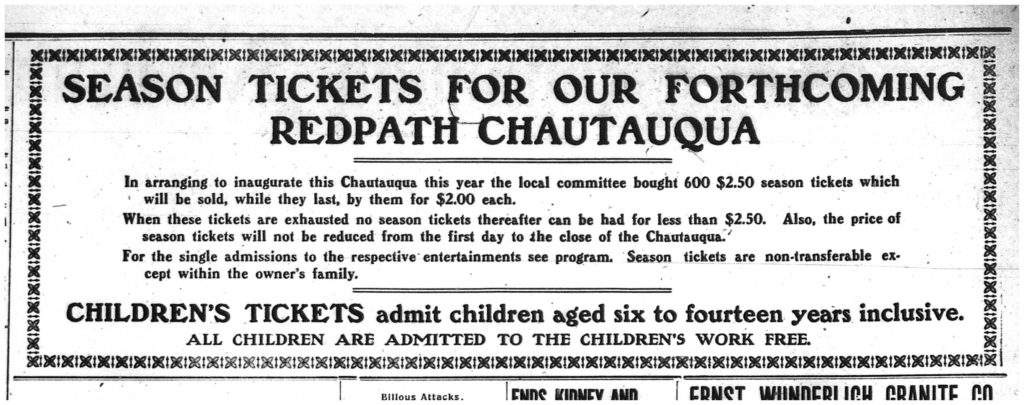
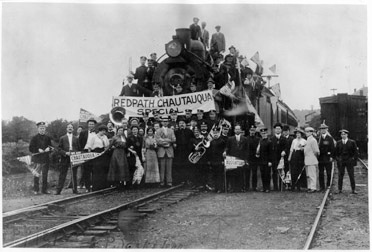
Wilmington Schools
As previously stated, the first school in Wilmington was private, held in the house of Mr. Peter Stewart. Classes were taught by a Miss Agnes Fonda. The first public school (1841) was a township school in a small frame building. 117 pupils were eligible to enroll and 53 attended the first term, which was a mere 42 days.
Florence Township had their own school before Wilmington did, but asked to be included when the Wilmington school began. They remained part of Wilmington school for four years, after which they separated again.
1849; 2 story brick building was built for 200 students.
1869; a three story building was built at the princely sum of $30,000.
1878 saw seven schools in town, to support the 1000 students.
1892; Wilmington had an accredited high school; one of only 15 in the state.
The 1920’s saw a great deal of growth; construction of a number of portable buildings, as well as more permanent structures including a large auditorium and a 14 room building with modern heating and lighting.
Two smaller schools were built in 1941 when Arsenal became part of the community.
1949 Wilmington and Lorenzo merged, forming Wilmington Lorenzo 209U District.
1953 saw a new high school being built for $652,000.
In 1961 there were 1600 students and 81 teachers.
Like others, Wilmington schools battened down the hatches and moved to online schooling for the first months of the Covid 19 pandemic.
As of 2022, there are four schools(4); Bruning Elementary with K-1 students, Stevens Intermediate with grades 2-5, the Middle School with grades 6-8 and Wilmington High School with grades 9-12. Wilmington schools comprise an enrollment of 1200 students and a graduation rate of 96%.
Wilmington Public Library (District)
The Kings’ Daughters and Sons was a social organization, loosely related to the local mines, consisting largely of women in Wilmington, IL. Among other good deeds, they dedicated themselves to raising the funds and requesting donations to begin the first library in Wilmington. In 1909 the doors opened on the Wilmington Library and Reading Room with one librarian. The Library was initially located in the former First National Bank, whose space was donated, with utilities and other bills continuing to be paid for by the Kings’ Daughters and Sons.
The library moved to its current location in 1970.
The 1961, 125th Anniversary of Wilmington brochure notes that “it is an interesting fact to note the caliber of books which now cost $3.00 and $4.00 were purchased in the beginning years for twenty-five and fifty cents.” The average book in today’s collection costs roughly $25.00. As a comparison, in 1936 the library owned 6,000 volumes, and had 774 borrowers; in 1961, the library had 36 magazines, 11,000 books, and 3500 borrowers. Today the library boasts physical magazines, but also hundreds of electronic magazines available, over 30,000 books and roughly 4500 cardholders in a district of roughly 8000 people; a remarkable percentage!
In 2022, the library had a staff of 19. All but one of the managerial staff has their professional librarian certification (Master’s of Science in Library and Information Science). The library not only has 32,000 books to loan out, but also has hundreds of DVDs, video games, and audiobooks, as well as newer technology such as the mobile hotspots and Chromebooks. The Library instituted a ‘Library of Things’ in 2022, which has a number of kitchen appliances, as well as many tools among its 116 items. Some of the more interesting items which can be borrowed by local patrons are full-size cut-outs, guitars, and projectors.
Wilmington Public Library District visibly rose to the challenge of Covid, installing The Drop, where patrons may pick up materials outside library hours, as well quickly access the internet and print. During the shutdown for Covid, the library offered curbside service for book delivery and provided storytime videos and weekly take-and-make crafts.
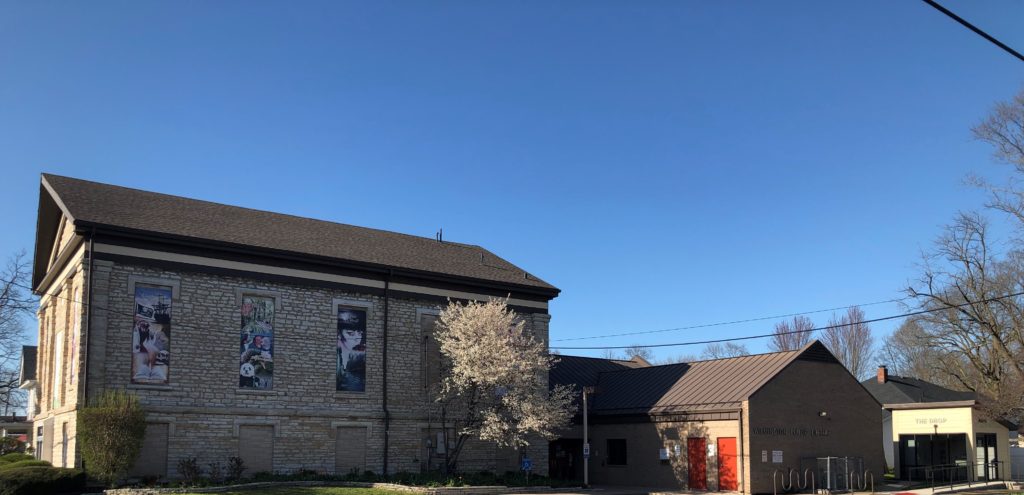
Wilmington Landmarks
Wilmington is the home of the Gemini Giant (2), a 30 foot statue standing outside the Launching Pad diner/museum, on Historic Route 66. The Giant is typical of the ‘Muffler Men’ statues which were popular in the US during the 1950’s. Wilmington’s Giant was purchased and re-designed to reflect the Gemini space program, which is where the ‘Gemini’ of the name originates. The figure is holding a rocket, and wearing a ‘helmet’ which makes it unique among the surviving ‘Muffler Men.’
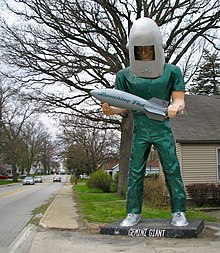
“Get Your Kicks, on Route 66,” sang Nat King Cole(5), and Route 66 runs through Wilmington. The original roadway is the stretch between Joliet stretching towards St. Louis, which includes Wilmington. Due to city growth and Route 59 was extended between Routes 52 and Route 6, allowing people to by-pass Joliet on their way to Route 66. When this was done, the stretch of Route 66 through Wilmington was designated as ALT 66. Wilmington and the Route 66 Red Carpet Corridor celebrate the original Route 66.
A Landmark on Rt 66 in Wilmington is The Launching Pad. It was originally built in 1960 (as the Dairy Delite) and re-named The Launching Pad after the installation of the Gemini Giant, to go along with the Apollo ‘space’ theme.(6) Both are now on the Illinois Hall of Fame. But it’s not just the Giant and the Launching Pad which have received special status; a good swathe of Route 53 between Wilmington and Joliet was named historic (see document below at (5)). The documentation states that it was selected in part for the older 2-lane style of highway which in many other places have been replaced with larger highways. Wilmington is also part of the ‘Route 66 Red Carpet Corridor,’ a group of communities in Illinois which band together to celebrate ‘The Mother Road,’ as Route 66 has also been known. The Route 66 Corridor celebrates each town’s place on the historic route with ‘no contact’ programming during the plague years (roughly 2019-2021), and more vibrant events, such as craft fairs, concerts and car shows, among other family fun when people can congregate freely and safely.
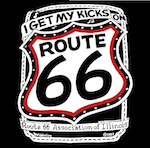
Wilmington Myth
Did the King of England stay here? One document held by Wilmington Library mentions the future Edward VII, when he was Prince of Wales. When travelling, he would use the name of ‘Baron Renfrew.’ to allow him to travel semi-inconspicuously. In the fall of 1860 he was invited to the farm of one Charles Spencer, a town founder in Dwight, Illinois. The Pantagraph and Dickinson College’s ‘House Divided’ (civil war research engine) both state that the Prince did travel to Illinois, and he did go hunting for several days, and attended church, in Dwight. No note is made that anything else may have happened.
References
(1) https://www.census.gov/quickfacts/wilmingtoncityillinois. Retrieved 01/19/2002.
(2) https://www.legendsofamerica.com/il-wilmington/; https://en.wikipedia.org/wiki/Gemini_Giant. Retrieved 01/19/2002. https://www.enjoyillinois.com/explore/listing/gemini-giant Retrieved 1/20/2022.
(3) http://www.native-languages.org/illinois.htm Native tribes in Illinois. Retrieved 2/3/2023.
(4) https://www.illinoisreportcard.com/District.aspx?source=profile&Districtid=56099209U26# Retrieved 2/6/2023.
(5) https://www.nps.gov/subjects/travelroute66/index.htm Route 66 main website, from National Park System; https://en.wikipedia.org/wiki/(Get_Your_Kicks_on)_Route_66 Song about Route 66, originally sung by Nat King Cole; https://www.theroute-66.com/wilmington.html#geminiGiant Gemini Giant and Route 66 in Wilmington, IL; https://www.route66news.com/2017/12/06/launching-pads-new-owners-launch-crowdfunding-site/ old/new diner on Route 66 in Wilmington; a https://catalog.archives.gov/id/28891486 link to National Register of Historic Places, National Register of Historic Places-Registration Alt Route 66 Wilmington to Joliet copy of actual documentation placing Route 53 between Wilmington, IL and Joliet, ‘Alt Route 66’ on National Register of Historic Places. Note in Photo 2 of 12 (showing house, parking lot by Launching Pad) that the Gemini Giant had not yet been installed. There is no date on the photo, but it clearly far pre-dates the document (2006) by decades. https://www.il66assoc.org/association-history/ Route 66 Association of Illinois; dedicated to preservation of ‘The Mother Road.’ https://www.il66assoc.org/2017/07/buy-a-t-shirt-save-a-road-yacht/ Link to purchase T-shirt with ‘I get my kicks on Route 66’ graphic designed by Bob Waldmire (above) Retrieved 1/20/2022 http://www.ilroute66redcarpetcorridor.com/ The site to keep you in the know on Route 66 events from Joliet to Towanda heading southwesterly. All retrieved 1/19/2022.

(6) https://www.hq.nasa.gov/office/pao/History/Apollomon/Apollo.html Project Apollo: A Retrospective Analysis. An online book from NASA, detailing many aspects of the Apollo program, which ran 1961-1969, when Neil Armstrong became the first man to set foot on the moon. Retrieved 1/20/2022
City of Wilmington https://www.wilmington-il.com/ retrieved February 7, 2023.
Wilmington Fire District https://www.wilmingtonfire.org/ retrieved February 7, 2023.
Bibliography
[REF LH numbers are call numbers for items in Wilmington Public Library District’s Local History collection; on-site use only]
History
Patricia Dewey Sanders and Jennifer Sanders, compilers. Off the Beaten Path in Will County, Illinois. (c) 2004 Will/Grundy Counties (IL) Genealogical Society. Background on Will County history with sections on individual townships; maps, some photocopied drawings.
REF LH 977.325 OFF
Wiss, Janney, Elstner, and Associates. Rural historic structural survey of Will County, Illinois; Context History, August 2003 for the Will County Land Use Department and the Will County Historic Preservation Commission. 2003 Wiss, Janney, Elstner, and Associates, Chicago, IL. First half has extensive history of Wil County, documents many historic structures, extensive bibliography.
REF LH 977.325 RUR
From war to peace; Joliet Army Ammunition Plant. Brochure, DVD on transition of Joliet Army Ammunition Plant to Midewin National Tallgrass Prairie, Joliet Arsenal Development Authority and Abraham Lincoln National Cemetery.
REF LH 077.325 FRO
The G-Shaft Candy Story, Paul Gilmour. Collection of articles on G-Shaft candy 1974-1996.
REF LH 977.325 GIL
A Few Facts about Wilmington. Joliet News Printing Co, Joliet IL. Photocopy of original.
REF LH 977.325 FEW
Wilmington Centennial 1836-1936. [City of Wilmington, IL] Brochure, 16p.
REF LH 977.325 WIL
Cosgrove, Myra S. Wilmington the Island City. 13 page brochure, typewritten.
REF LH 977.3 COS
Wilmington Township Library 1909-1970. 1 page folded Flyer. [Wilmington Chamber of Commerce and Industry]
REF LH 027.437725 WILu
Wilmington’s 125th Anniversary. 44 unnumbered pages.
REF LH 977.325 WIL

